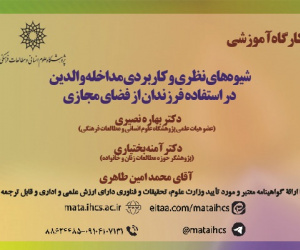موازنه بیانیه نیاز، ویژگی ها و توسعه فناوری با استفاده از QFD در محصولات کلان بومی در صنعت هوایی (مقاله علمی وزارت علوم)
درجه علمی: نشریه علمی (وزارت علوم)
آرشیو
چکیده
محصولات و سامانه های پیچیده، نقش حیاتی و روزافزونی در پیشرفت و توسعه اقتصاد نوین در کشورها دارند و مزیت رقابتی آنها را شکل داده اند. از طرفی زمان بربودن طراحی و تولید این گونه محصولات، موجب شده است تا در بیشتر مواقع پس از تحویل، کارایی لازم را در صحنه بهره بردار نداشته باشند. در این رابطه نیاز است تا رویکردهای بومی متناسب با شرایط حاکم با فضای هر کشور، ایجاد و توسعه داده شود. این پژوهش، به دنبال ایجاد و توسعه چنین رویکردی برای طراحی و تحویل تدریجی محصول در کمترین زمان و از طریق موازنه عناصر آمادگی فناورانه، سند بیانیه نیاز و ویژگی های محصول در سامانه های کلان و پیچیده هوایی است. فرایند موازنه با استفاده از سه مرحله تابع گسترش کیفیت، انجام شده است. در این پژوهش با توجه به صحنه بهره بردار و الزامات مهندسی سیستم ها و نمودار وی (Vee)، در حداقل دو نقطه بازنگری فنی در طراحی و توسعه، تحویل تدریجی محصول پیشنهاد شده است. نتایج نشان داده است که به کارگیری موازنه مذکور، تأثیر بسزایی در به کارگیری محصول در صحنه بهره بردار داشته و مسیر طراحی و توسعه محصولات کلان در کشور را با ارائه یک نقشه راه طراحی، هموار کرده است. رویکرد ارائه شده، راهنمایی برای بخش تحقیق و توسعه سازمان هاست و به این منظور از آن استفاده می شود.Balancing Requirement Statements, Features and Technology Development Using QFD in Indigenous Macro Products in the Aviation Industry
Purpose: This study aims to create and develop an approach for the design and gradual delivery of the product in the shortest time and through the balance of the elements of technological readiness, the need statement document, and the characteristics of the product in large and complex air systems.Design/methodology/approach: In this study, the balancing process has been carried out using three stages of the Quality Function Deployment (QFD). In the first stage, product specifications have been prioritized using customer needs. In the second stage, product specifications have been prioritized based on the specifications of the first stage. In the third stage, the required technologies have been prioritized using the specifications of the product in the second stage. To conduct the research, industry experts who were in the unit related to the desired product provided the necessary data. Out of the 10 experts in that unit, seven have collaborated in the design and implementation of the model and three have approved the model. Finally, the discussion model was approved by the company's high committee.Findings: After extracting the priorities of technologies, the final meeting of the QFD group was held with the presence of expert designers and the operator's representative. In this meeting, the process of using QFD and the obtained results were discussed. Then, using the scores obtained for the technologies (priority value) level of technological readiness for each of the product technologies and the approaches of designing, producing and delivering the primary, intermediate and final products were determined. The results of product prioritization based on technology development were also approved by the high committee.Research limitations/implications: In this research, the balance of technological readiness, a document of requirement statement, and product characteristics in the design management of macro systems of defence air base products were analyzed by QFD. There was a need to check if there were other tools for balancing. Also, the scope of this study was limited to product design, and it is necessary to extend the balance to the entire life cycle of the product. In this research, the researchers faced with challenges due to the lack of familiarity with the elites or complete and sufficient research and training of the elites and managers of the country's research and defence industries. Also, the lack of managerial approaches to system and standard design and the integration of the approaches communicated by the regulatory and standardization centres of the country on the system design of large and complex products were the other limitations of this research.Practical implications: The model proposed in this research made it possible to produce large and complex products in the aviation industry due to the existence of restrictions. On the other hand, the gradual design, production, and delivery of big products made the products suitable for the user's scene to be designed and produced first. While maintaining the quality of the product, the time to obtain the products should also be reduced.Social implications: Acquiring large and complex products in the country will accelerate the country's development.Originality/value: The design and production of large and complex products based on technology development with a gradual product delivery approach using QFD is one of the innovations of this research. The application of the proposed approach will resolve some of the problems related to the design of large products in different areas.











